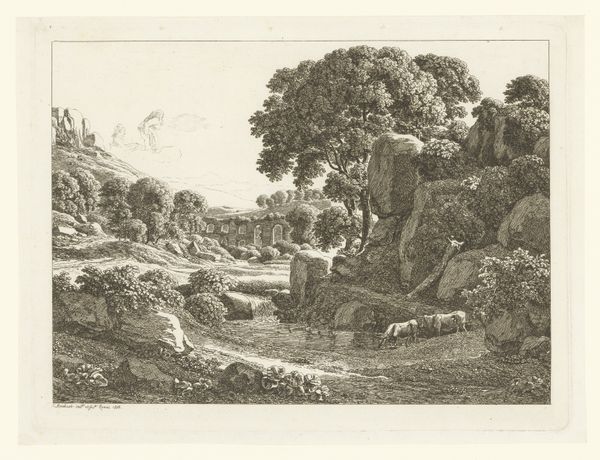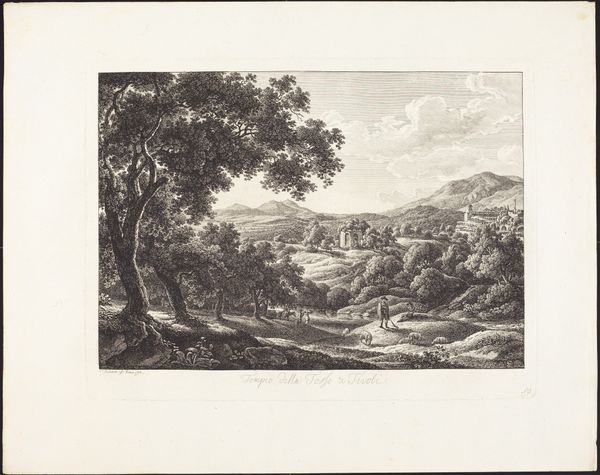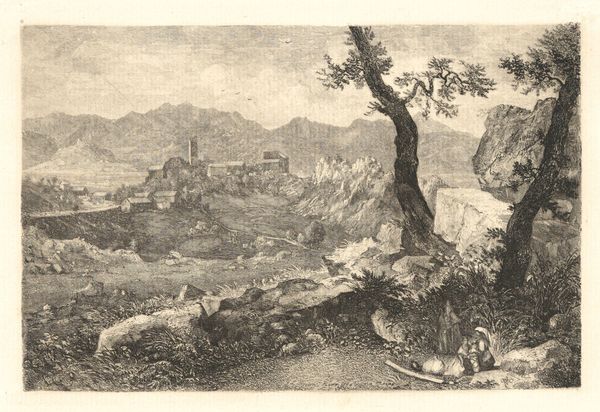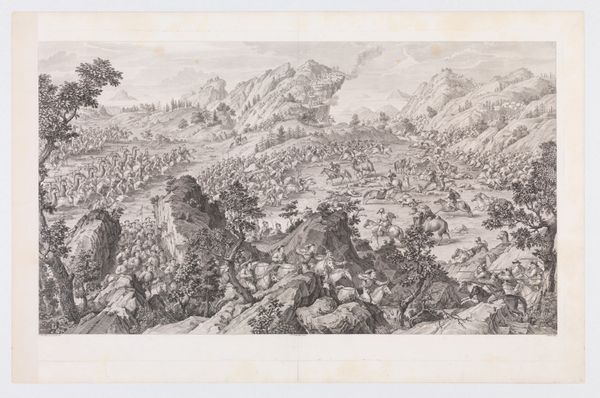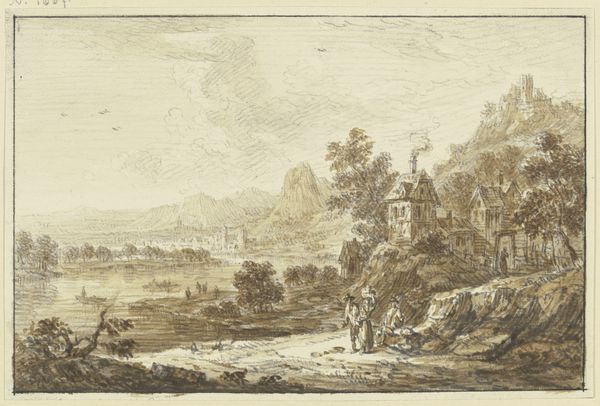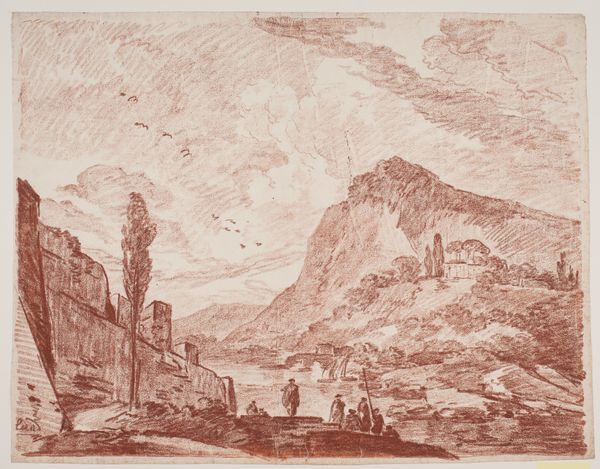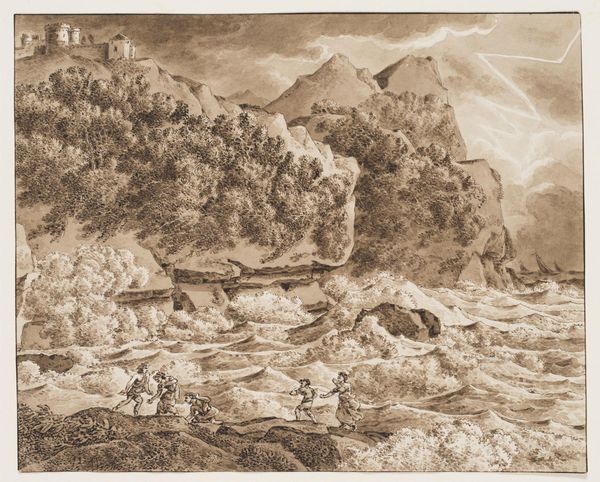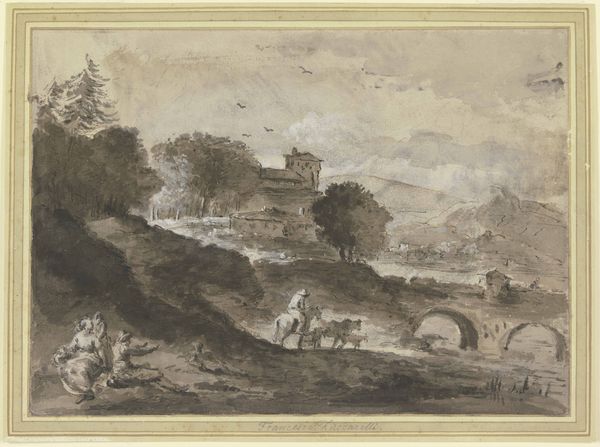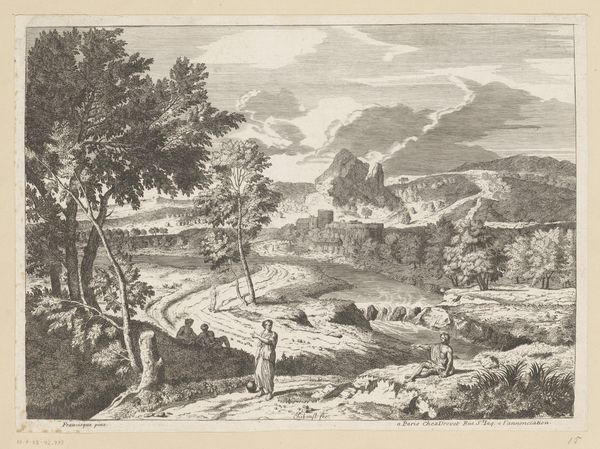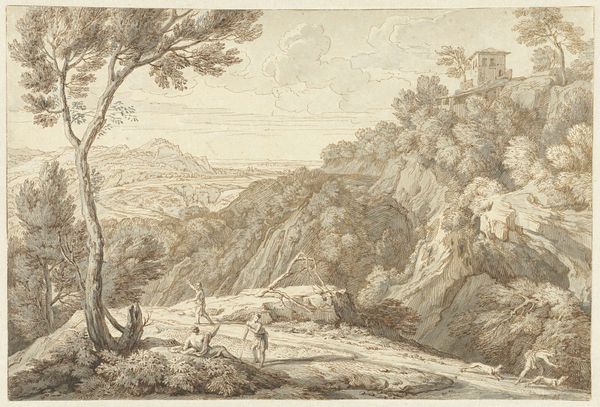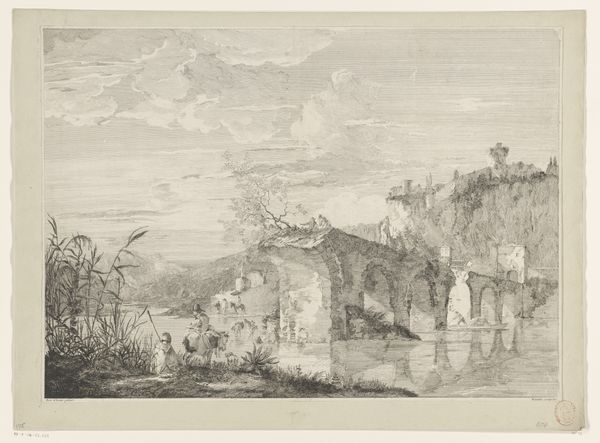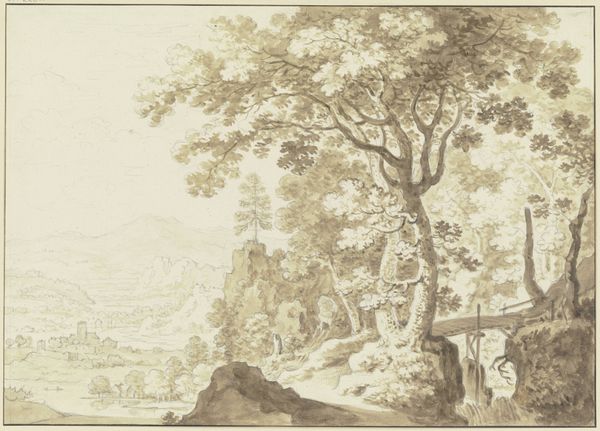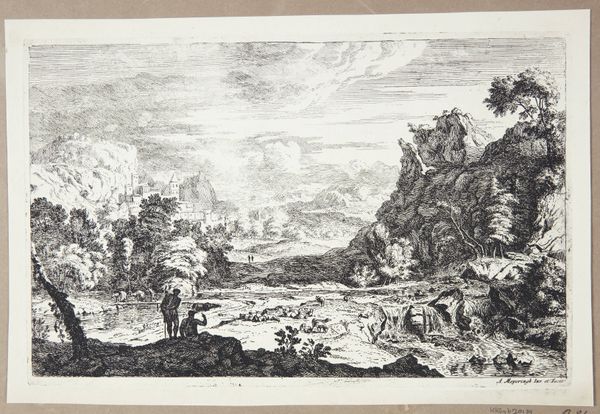
Das antike Theater von Taormina, im Hintergrund der rauchende Ätna 1845
0:00
0:00
drawing, watercolor, ink, architecture
#
drawing
#
ink painting
#
landscape
#
watercolor
#
ink
#
romanticism
#
history-painting
#
watercolor
#
architecture
Copyright: Public Domain
Editor: This is Eduard Wilhelm Pose’s "Das antike Theater von Taormina, im Hintergrund der rauchende Ätna," created in 1845. It's a drawing in ink and watercolor. The sepia tones give it such a wistful, nostalgic air, but what's really striking to me is the crumbling architecture contrasted with the imposing, permanent presence of the volcano. What are your thoughts on this work? Curator: Seeing the traces of architecture rendered in ink and watercolor speaks volumes about 19th-century artistic labor. Think about the social context: who had the resources to commission such detailed documentation? The Romantic obsession with ruins often ignores the hands that built, and the historical forces that destroyed these sites. What kind of exploitation, of material extraction and human toil, went into both constructing and then depicting this scene? Editor: So, it’s not just about the beauty of the ruins but about the processes involved? Curator: Precisely. And think about the materials: Where did the ink and paper come from? Who produced them? Whose stories are erased when we only focus on the artist’s “genius” or the romantic allure of a crumbling theater? Also, look closely at the precision of the lines – architecture wasn't just aesthetics; it was about displaying power. Now, reduced to a picturesque landscape, how do the means of production shift to perpetuate a similar ideology? Editor: That makes me reconsider the whole composition. The detail almost feels like a form of cataloging, of possessing the scene. Curator: Exactly! The materiality and the labor involved both in its creation and its subject matter speak to larger power structures and economic realities of the time. What do we consume when we engage with artworks like this today? Editor: I hadn't considered the implications of that level of detail before, the labor behind the paper and ink themselves. It gives the artwork a completely different meaning, thinking about the larger forces at play rather than just the aesthetic appeal. Curator: Precisely. It’s about revealing those unseen layers. The smoke from Etna might signify change, a commentary, perhaps, of not only time passing, but power changing hands through a physical and cultural landscape.
Comments
No comments
Be the first to comment and join the conversation on the ultimate creative platform.

